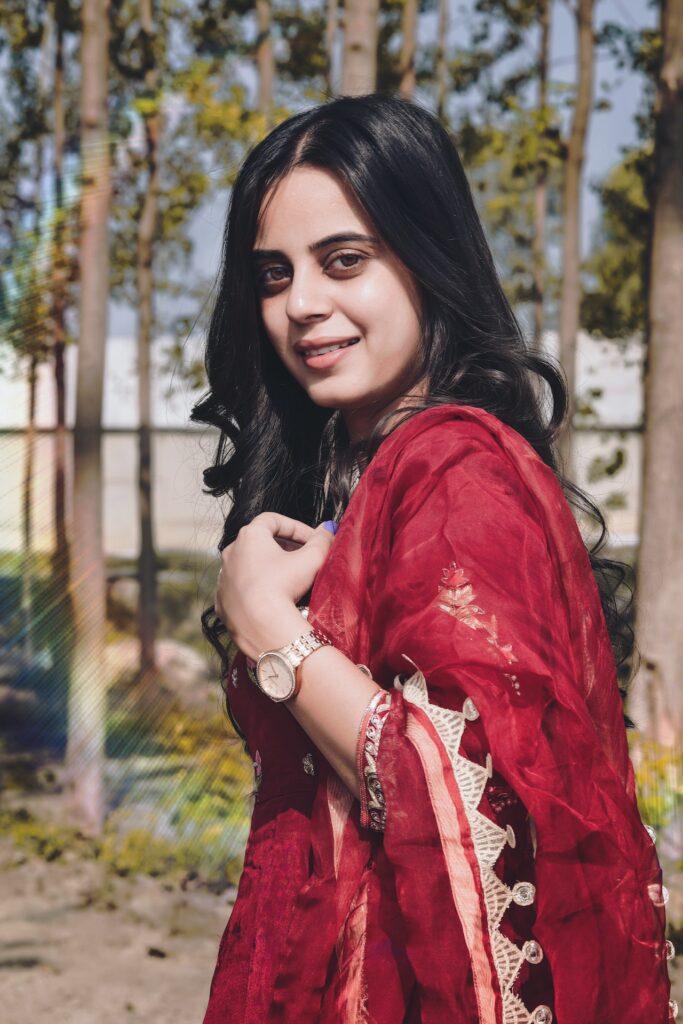The colors used in Tanta Cotton sarees are mostly vibrant and bold, with contrasting hues that make the saree stand out. The sarees are available in different styles and designs, including traditional and modern patterns.
The Tanta Cotton sarees are an integral part of the cultural heritage of Balasore and are highly prized by the locals. They are also popular among saree enthusiasts across the country and are exported to different parts of the world.
Manipuri Tant saree is a traditional handloom saree from Manipur, a northeastern state of India. Tant is a type of cotton fabric that is lightweight and comfortable to wear in the hot and humid weather of the region. The Manipuri Tant saree is known for its intricate designs and bright colors that reflect the rich cultural heritage of Manipur.
The weaving of Manipuri Tant sarees is done on handlooms by skilled weavers, who have been practicing the art for generations. The sarees come in a variety of designs and patterns, with motifs inspired by nature, mythology, and cultural traditions. Some popular designs include the phanek mayek naibi, which features a border with Manipuri alphabets, and the mayek naibi, which has a border with Manipuri numerals.
Manipuri Tant sarees are popular among women in Manipur for both casual and formal occasions. They are also exported to other parts of India and around the world, where they are appreciated for their beauty and unique craftsmanship. If you’re looking to buy a Manipuri Tant saree, you can find them in local markets in Manipur or through online retailers that specialize in traditional Indian clothing.
There are different types of Manipuri Tant sarees that are known for their unique designs and weaving techniques. Here are a few popular types of Manipuri Tant sarees:
- Phanek and Innaphi: Phanek and Innaphi are two different types of Manipuri Tant sarees that are worn by women in Manipur. Phanek is a skirt-like garment, while Innaphi is a shawl-like garment that is draped over the shoulder. Both these sarees are made from the same type of cotton fabric and are woven using traditional handloom techniques.
- Wangkhei Phi: Wangkhei Phi is a Manipuri Tant saree that is woven using a unique technique called the warp ikat. In this technique, the yarns are dyed before they are woven, creating a patterned effect on the fabric. Wangkhei Phi sarees are known for their vibrant colors and intricate designs.
- Leirum Phee: Leirum Phee is a type of Manipuri Tant saree that is known for its delicate and intricate designs. The saree is woven using a combination of different yarns, including cotton, silk, and zari, which creates a shimmering effect on the fabric. The saree is often adorned with intricate embroidery and beadwork, making it a popular choice for weddings and other special occasions.
- Moirang Phee: Moirang Phee is a Manipuri Tant saree that is named after the village of Moirang in Manipur. The saree is known for its bold and bright colors, which are created using natural dyes. The saree is also adorned with intricate embroidery and beadwork, making it a popular choice for weddings and other special occasions.
These are just a few popular types of Manipuri Tant sarees. Each type has its unique design and weaving technique, making them a prized possession for those who appreciate traditional handloom sarees.
Disclaimer: The content provided on Incredible Sarees’ blog is for informational purposes only. The information presented is based on our knowledge and understanding of sarees as of September 2023, and it may not reflect the latest trends, styles, or industry updates.
The blog posts on Incredible Sarees are intended to provide general information and guidance regarding sarees, including tips on styling, fabric types, draping techniques, and fashion advice. However, it is important to note that fashion trends are constantly evolving, and individual preferences may vary.
While we strive to ensure the accuracy and reliability of the information provided, Incredible Sarees cannot guarantee the completeness, timeliness, or accuracy of the content. Therefore, we advise readers to use their discretion and consult other reputable sources or professionals for specific recommendations and personalized advice.
Incredible Sarees’ blogs may contain external links to third-party websites or resources. These links are provided for convenience and do not imply endorsement or responsibility for the content or services offered on those websites.
The views and opinions expressed in the blog posts are those of the authors and do not necessarily reflect the views of Incredible Sarees as a whole.
Incredible Sarees reserves the right to modify, update, or remove any content on the blog without prior notice. We also reserve the right to change the focus, format, or content of the blog at any time.
By using the information provided on Incredible Sarees’ blog, you acknowledge and agree to the above disclaimer. We encourage readers to engage with us, share their feedback, and contribute to the discussions respectfully.
For any specific concerns or inquiries regarding the content on Incredible Sarees’ blog, please email us at [email protected]


